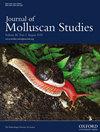潮间带石鳖线粒体基因组适应性进化研究
IF 1.2
4区 生物学
Q2 MARINE & FRESHWATER BIOLOGY
引用次数: 2
摘要
潮间带是压力最大的环境之一,温度、盐度、pH值和氧气浓度都会发生极端变化。海洋软体动物,特别是属于生态重要生物类别的石鳖,在这种极端环境中生存,是研究压力适应的理想系统。众所周知,线粒体对能量稳态至关重要,环境因素的变化会导致线粒体功能障碍,从而对生物体造成伤害。潮间带生物在这方面是例外,因为它们能够保持线粒体的完整性。在这里,我们使用来自潮间带七个石鳖的线粒体遗传成分来推断系统发育关系。对单个蛋白质编码基因(PCG)进行选择分析,以识别和绘制线粒体呼吸链复合物模型结构中潜在的适应性残基。结果显示,在所有PCG的多样化选择下,位点的氨基酸发生了显著变化,表明壳聚糖中的线粒体基因组正在经历适应性进化。在质子泵以及跨膜螺旋的易位通道和周围的环区中观察到了这些位点,从而暗示了在潮间带的动态环境中生存所必需的线粒体蛋白的功能修饰。本文章由计算机程序翻译,如有差异,请以英文原文为准。
Insight into the adaptive evolution of mitochondrial genomes in intertidal chitons
The intertidal zone is one of the most stressful environments, with extreme shifts in temperature, salinity, pH and oxygen concentration. Marine molluscs, particularly chitons that belong to the category of ecologically significant organisms, survive in this extreme environment, and are ideal systems for studying stress adaptation. Mitochondria are known to be critical for energy homeostasis, and changes in environmental factors result in their dysfunction and consequent injury to the organism. Intertidal organisms are exception in this respect because they are capable of maintaining mitochondrial integrity. Here, we used mitochondrial genetic components from seven chitons of the intertidal zone to infer phylogenetic relationships. Selection analyses on individual protein-coding genes (PCGs) were performed to identify and map potentially adaptive residues in the modelled structures of the mitochondrial respiratory chain complexes. The results showed significant amino acid changes in sites under diversifying selection for all the PCGs, indicating that the mitochondrial genome in chitons is undergoing adaptive evolution. Such sites were observed in the proton pump as well as in the translocation channel of the transmembrane helices and the surrounding loop regions, thus implying functional modification of the mitochondrial proteins essential for survival in the dynamic environment of the intertidal zone.
求助全文
通过发布文献求助,成功后即可免费获取论文全文。
去求助
来源期刊

Journal of Molluscan Studies
生物-动物学
CiteScore
3.00
自引率
8.30%
发文量
36
审稿时长
3 months
期刊介绍:
The Journal of Molluscan Studies accepts papers on all aspects of the study of molluscs. These include systematics, molecular genetics, palaeontology, ecology, evolution, and physiology. Where the topic is in a specialized field (e.g. parasitology, neurobiology, biochemistry, molecular biology), submissions will still be accepted as long as the mollusc is the principal focus of the study, and not incidental or simply a convenient experimental animal. Papers with a focus on fisheries biology, aquaculture, and control of molluscan pests will be accepted only if they include significant advances in molluscan biology. While systematic papers are encouraged, descriptions of single new taxa will only be considered if they include some ‘added value’, for example in the form of new information on anatomy or distribution, or if they are presented in the context of a systematic revision or phylogenetic analysis of the group.
 求助内容:
求助内容: 应助结果提醒方式:
应助结果提醒方式:


